January 10, 2023
By May Allam
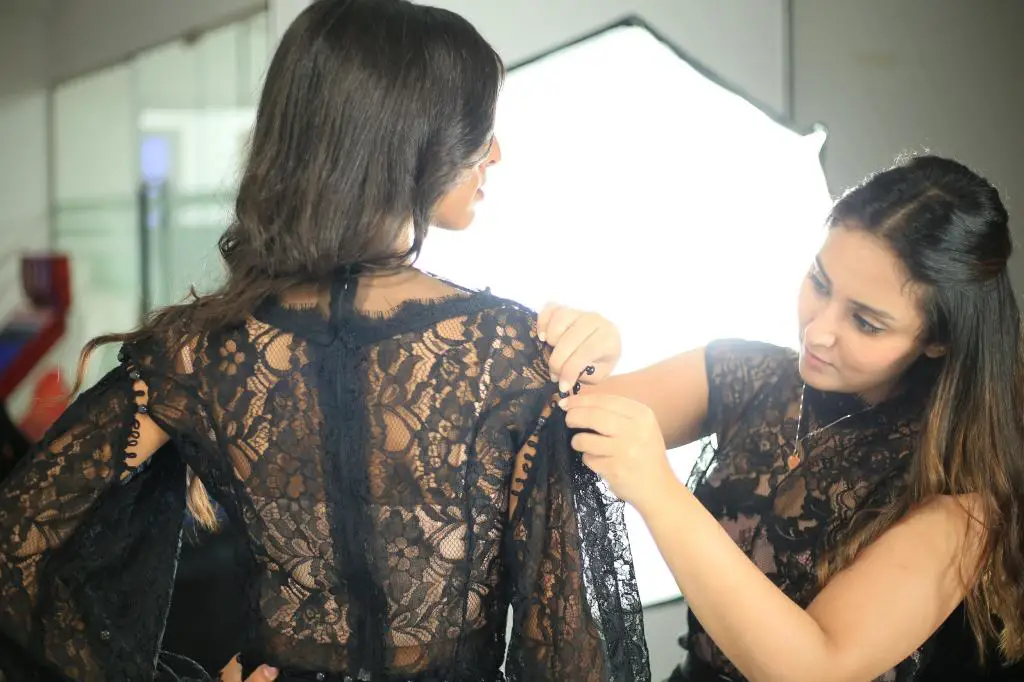
Inspired by her background in costume design, where working with tight budgets meant upcycling and reusing garments by giving them a new purpose, Hana Amer set out to start her own sustainable, modular brand, Couca Couture. The brand focuses on flexible sizing, zero waste pattern cutting and modular design, where one Couca item can be worn in up to 7 different ways.
Hana was awarded the best costume in the UK and Europe prize at the World of Wearable Art competition in 2013 when she was only 19. Her costume resides at the World of Wearable Art museum in Nelson, New Zealand.
She worked on independent films, at Phillipa Lepley, The Royal Opera House, and was a store manager at Uniqlo in London. She also worked on big national projects as a costume maker, such as the London 2012 Olympics and Paralympics opening and closing ceremonies. Hana also works as a Media and Events Officer at Grantham Institute for Climate Change and the Environment at Imperial College London.
Hana studied BA Costume for Performance at London College of Fashion and continues to be a University of the Arts London Sustainability Ambassador.
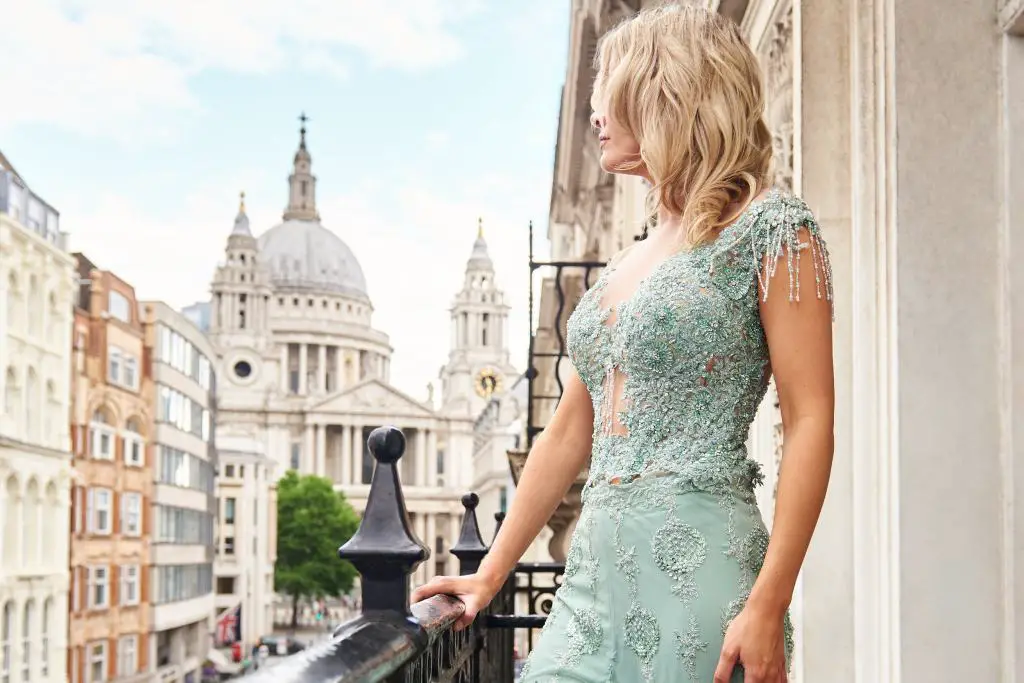
WoE. How has your passion for fashion when you were younger shaped your education and career?
Hana Amer: I have always loved dressing up and becoming other characters because it took me to all these new worlds where l got lost in my imagination. Most of my childhood pictures were of me dressed in a costume. And when I was not in a costume, I would be in colour coordinated outfits with the tiniest details taken into consideration.
Fashion is intergenerational. It is about passing down clothes to others; clothes that have lived a life of their own before they reached me, it is about finding timeless pieces and unique craftsmanship.
My mother used to love dressing me up as a child and coming up with innovative ideas and solutions. We always used what we had in our wardrobes because it was fun and more authentic. It never occurred to me that this hobby could become my career, until one day I came across the costume for performance course on London College of Fashion’s website.
I was still in school but my mother encouraged me to call the college and I was accepted at 17. But then I studied my first Masters in film and my second masters in political science and human rights law and I wanted to deviate away from the field of fashion, thinking it is harmful to our planet and jeopardising the rights of workers.
Until I worked at Uniqlo, the world’s second largest fast fashion retailer, and realised that I can dedicate my life to saving the fashion industry from itself and be a driver of change to help it redeem its former glory.
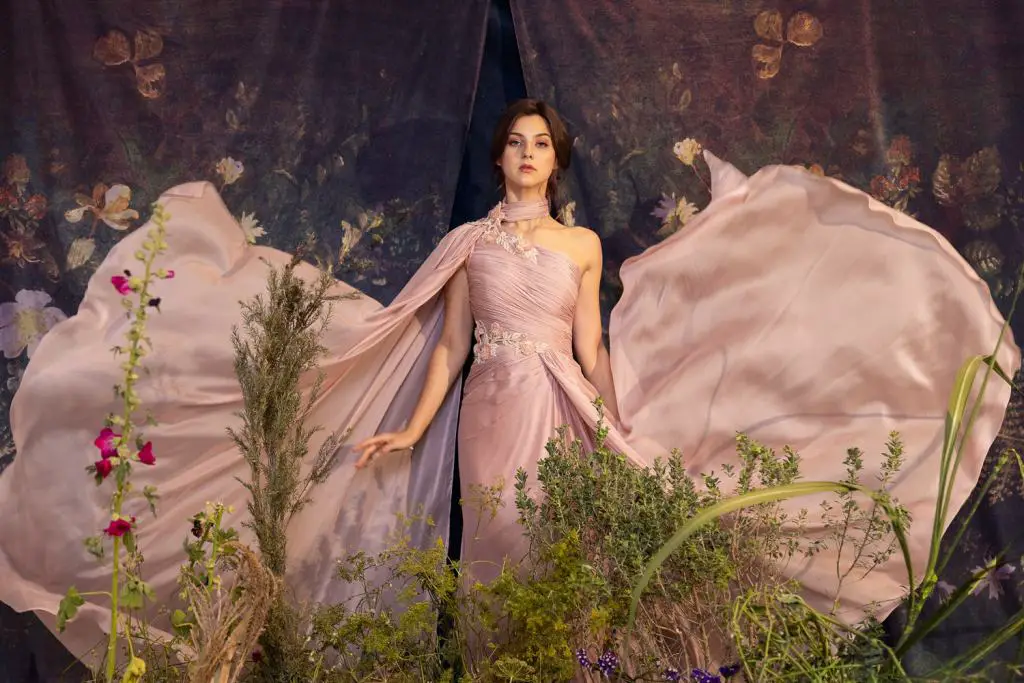
WoE. Tell us more about the concept of sustainable materials/fabrics used in your work.
HA: Currently there is no perfect solution to sustainable materials. All materials use up resources and are harmful to the environment in one way or another.
I try to work with the lesser of all evils, until I can reach zero-waste and offsetting. I try my best to use natural fibres such as raw silks, fair-trade cotton for lining and linen for summer collections- this means they will decompose and biodegrade eventually.
I also avoid blends of fabrics as that makes recycling even harder or impossible. In addition, I use upcycled and recycled fabrics and enhance the design’s modularity to guarantee longevity of the piece.
Moreover, Couca Couture operates with a zero-waste ethos, where even the tiniest of scraps will be utilised one way or another- whether through integration in the pattern making stage or used to make accessories such as flower broaches.
The lace l use in my designs is antique that I collect and repurpose, and is usually made of natural silk or cotton. In addition, l use offcuts/remnants or leftover stock form other designers.
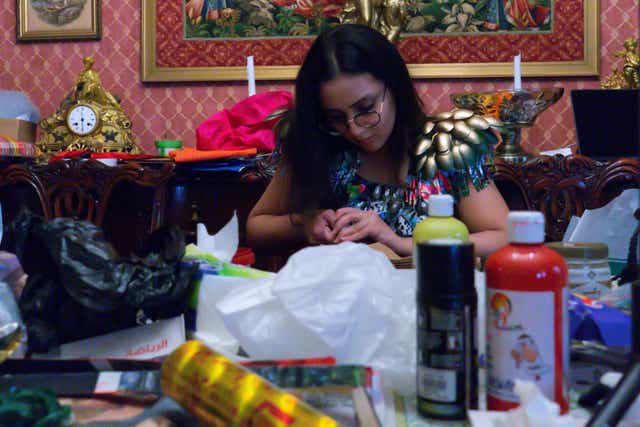
WoE. Do you think Egypt, a developing nation still, will be able to meet your expectations in the world of sustainable fashion design?
HA: Egypt has great potential to be the Middle East and Africa’s hub of sustainable fashion. We already have the foundations for waste management and utilisation. I have many ideas for making sustainable embroidery pieces for evening wear, and the only place I can experiment with these out-of-the-box ideas is in Egypt.
The concept of sustainable fashion is embedded in the norms of our ancestors so it shouldn’t be a challenge to rekindle their habits. With the right mix of fashion psychology, science and innovation, seed funding and governmental backing, I think many designers will be eager to join the sustainability club.
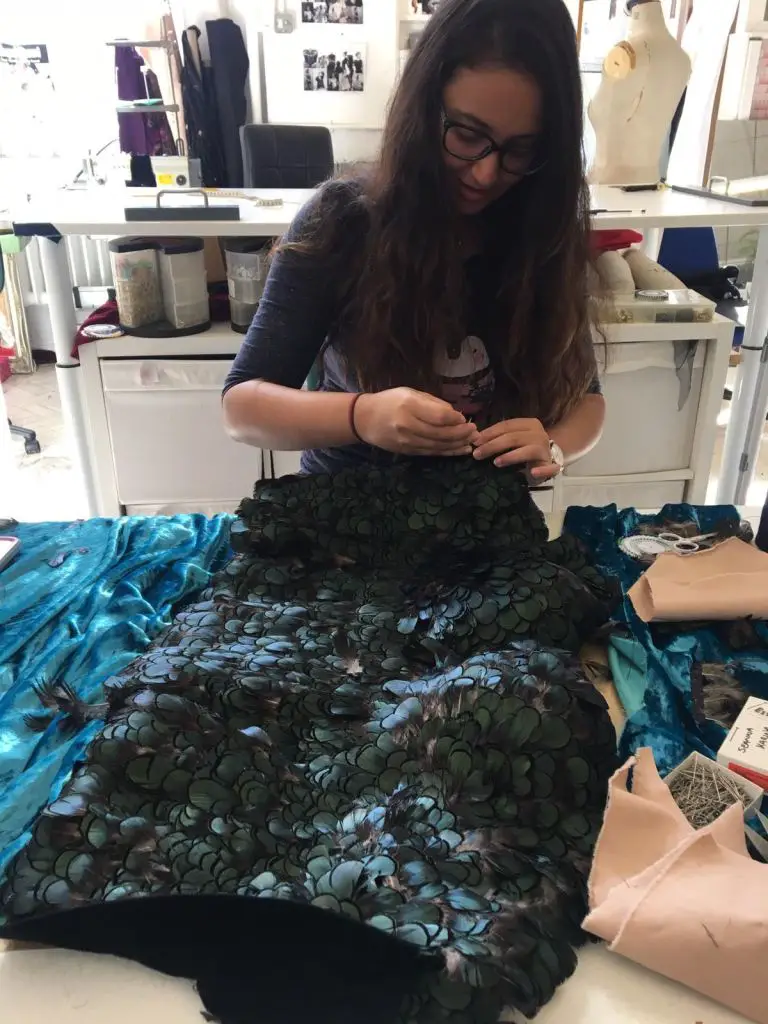
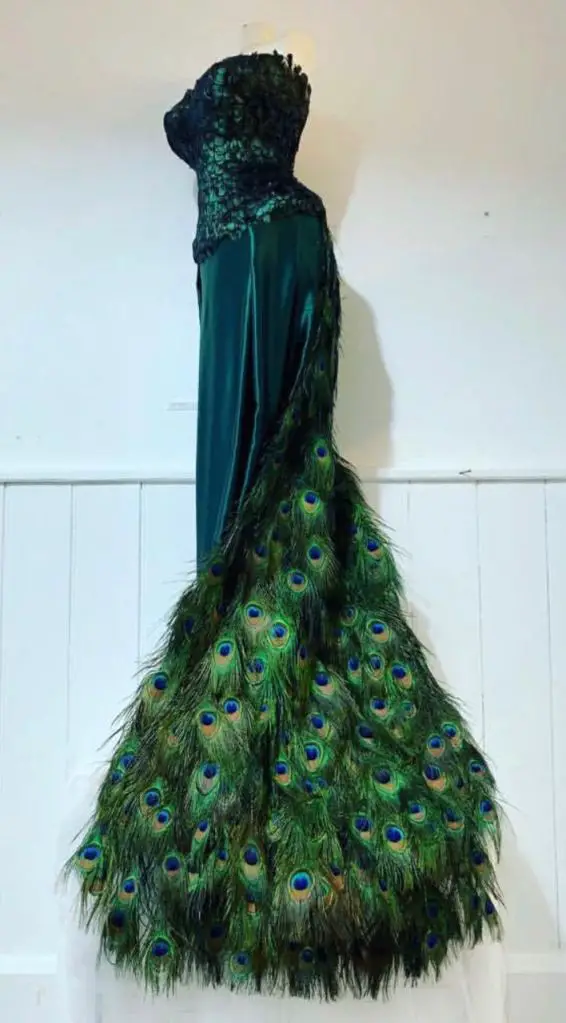
WoE. Tell us more about the Peacock dress you designed and how it was received.
HA: The peacock dress was a commissioned piece for an elite or member of high society in London, who wanted to dress up as a peacock queen for her 50th birthday themed Africa. All the feathers were hand sewn by me on the corset. They were not plucked off of the peacock, they were naturally shed. There are 5400 feathers on the corset alone and it took me 546 hours to hand-stitch. I got very attached to this piece and when it was time to hand it over to its new owner, I genuinely felt like I was letting go of a big part of me! I was then commissioned to make other peacock costume pieces for a music video.
WoE. Why is most of your work soiree/afternoon/evening wear? Would you consider producing everyday casual clothing?
HA: Most of my work reflects the complex designs that I enjoy making after studying Costume For Performance at London College of Fashion. It is almost a portfolio of my skills in corsetry and draping that I want to present to the world. More so, I found a gap in the sustainable eveningwear industry that I believe is my Unique Selling Point: Very rarely do sustainable brands present extravagant, embroidered and colourful designs, we usually associate sustainability with a natural colour palette and simplistic designs. I wanted to push the boundaries and present an elaborate set of colourful designs that tick the sustainability and eco-friendliness boxes.
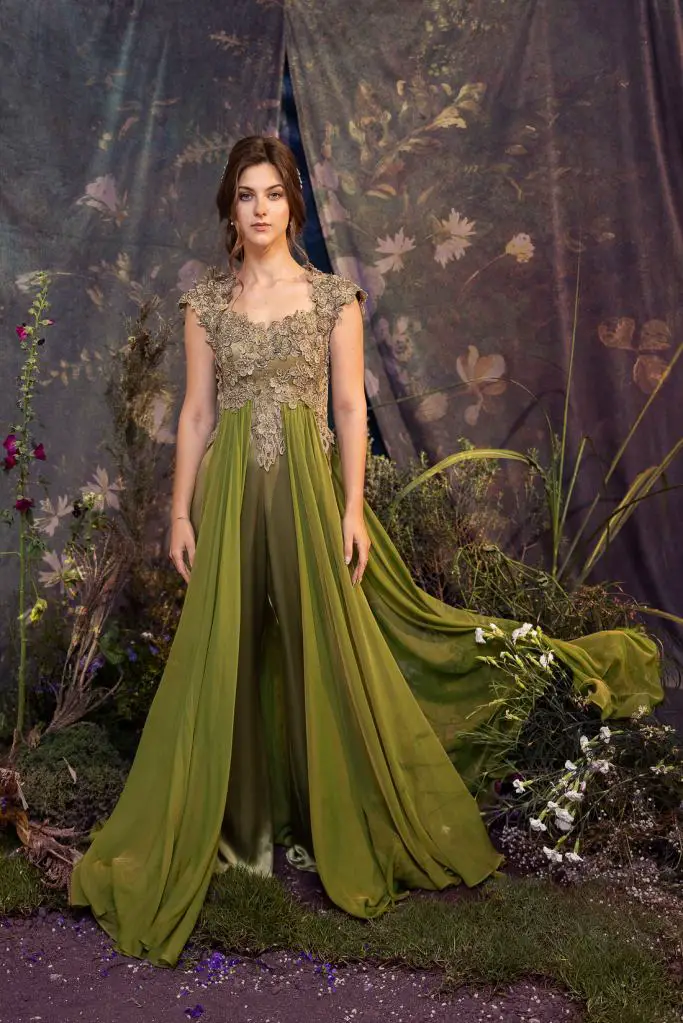
Furthermore, eveningwear is rarely sustainable. Yet most evening dresses are worn once then kept in a wardrobe or are disposed of because women don’t want to be seen with the same dress twice. With Couca’s designs, they can wear the same dress in a variety of ways and vary tis functionality so that it becomes a cocktail dress when worn short and an evening dress when worn long, for example.
There aren’t sustainable brands that make eveningwear. It’s a challenge that I love. Finding creative new ways to offer a glamorous dress that is sustainable. Because we associate sustainability with rags, browns, beige and green basic fabrics and extremely simplistic designs. But the truth is you can do so much more with it!
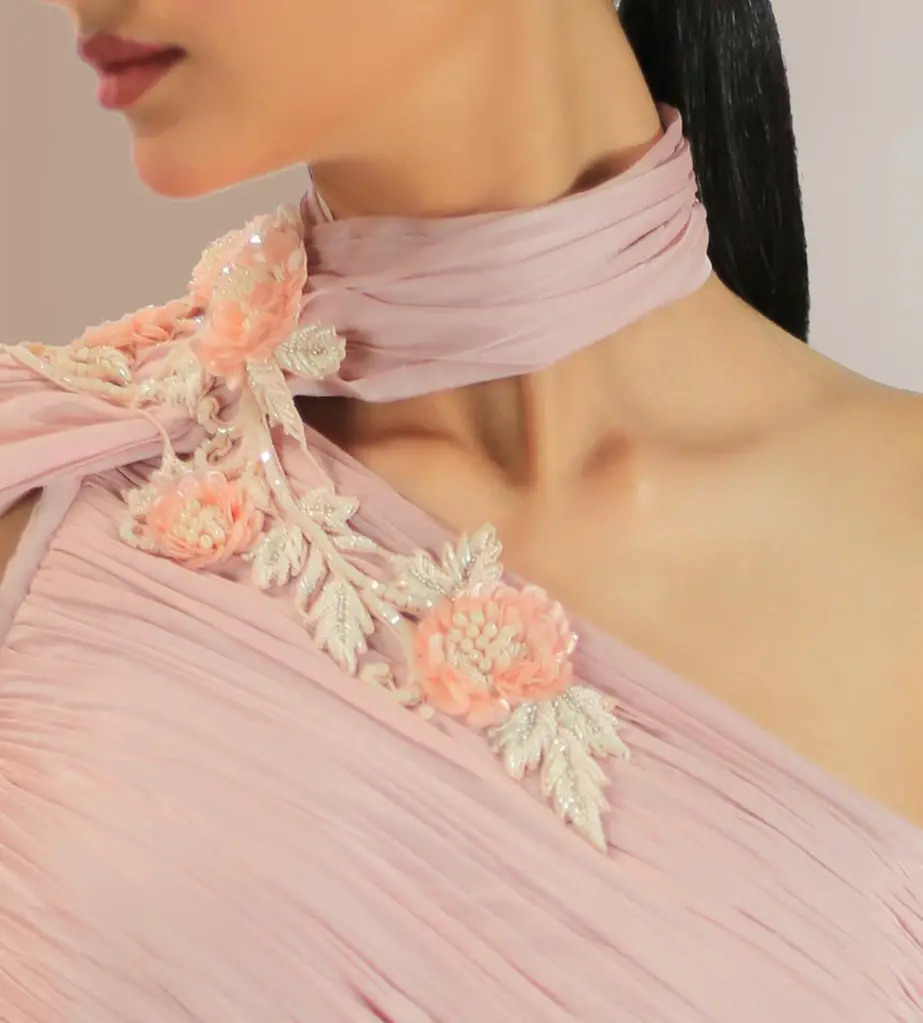
WoE. Lots of your dresses involve tulle layers. Is there an element in tulle particularly that makes it more sustainable for use?
HA: The collection of dresses I made from tulle are made using upcycled tulle that was used in other garment/, serving other purposes, as well as offcuts and deadstock. Moreover, they all have a high percentage of natural fibres (cotton and silk) in them. Despite that, blended fibres (cotton pots polyester) are very difficult or impossible to recycle and the fact that there is polyester in the tulle fabric’s blend means it will take up to 200 years to decompose still!
All our tulle dresses are modular, meaning they can be worn in more than one way, to ensure the wearer does not end their use instantly. With a high blend of natural fibres, I am also able to dye my tulles using natural dyes that are less harmful to the environment as well.
My aim is to find a more sustainable alternative and I am on the lookout for eco-friendly inventions that mimic tulle. By focusing on better quality and durable tulle, I create timeless pieces that I hope would last for years, making this relatively more sustainable and reduces the need for replacements.
WoE. Would you offer training classes for young and aspiring Egyptian designers in the field of sustainable fashion?
HA: I am always eager to share my experience with others. There was a lot of trial and error in my journey and I always welcome the opportunity to reflect on these steps, advise others embarking on a similar journey.
Finding the time to teach others is a valuable learning experience in itself. Before we teach the consumers or customers, fashion designers need to be aware of sustainability in the fashion industry.
I’m happy to engage is conversations with local designers, whether established or new to the scene, about their current methods and for us to devise ways in which we can take steps to make the brand more sustainable.
Moreover, teaching consumers to be ‘label-literate’ is important so they also understand the journey of who made their clothes and how.
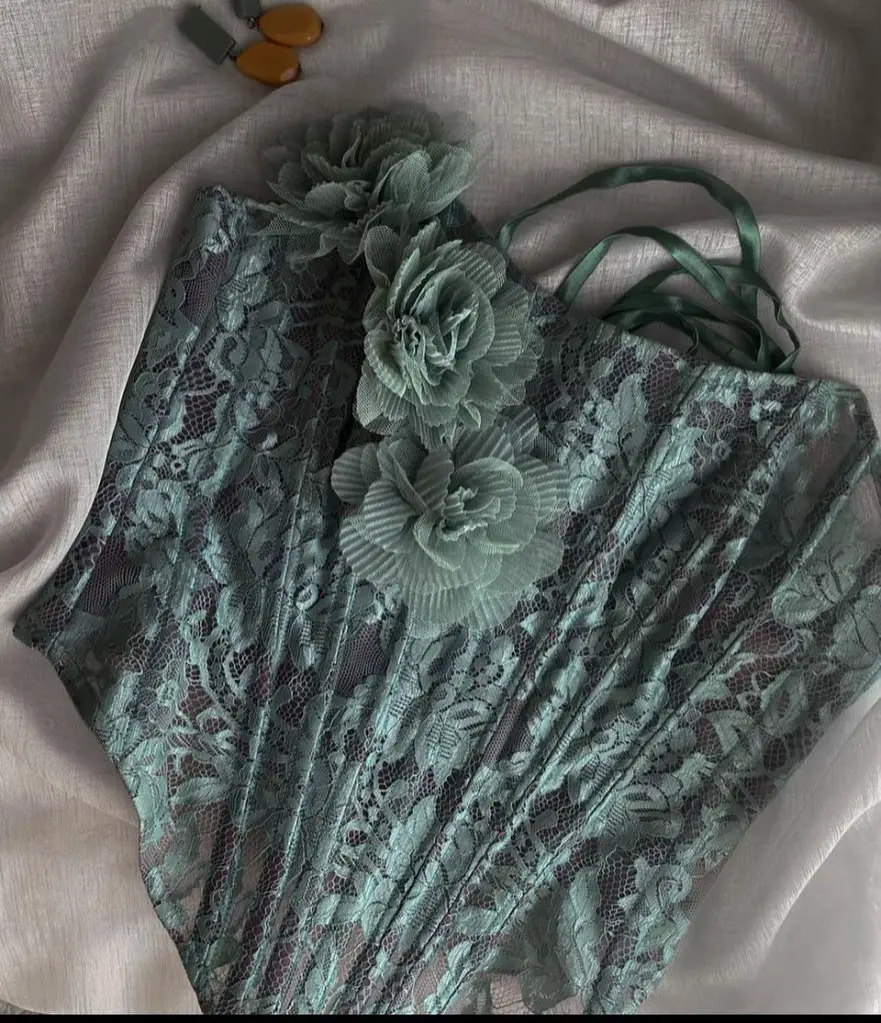
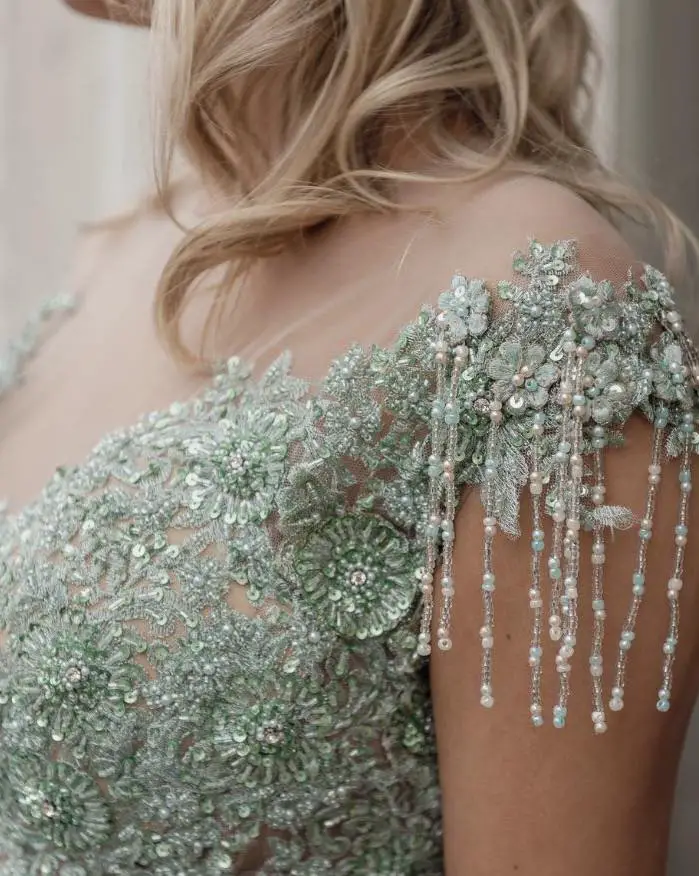
WoE. What are your personal dreams and dreams for women in Egypt, with regards to fashion in particular?
HA: I dream of a world where consumers are conscious and aware of their buying habits, where we all become minimalists and revert back to old practices that are actually more advanced and more considerate of our environment and planet.
I dream of a world that is made up of communities coming together to fix global issues and a heightened sense of the collective over the individual’s interests and needs.
Within this, I hope to unite Egyptian, Arab and African designers under one umbrella to inspire change, to revive the fashion industry’s honour and prestige as a form of art and cultural expression.
Through our common values we can unite in initiatives that help us embrace our differences and celebrate our uniqueness. Reviving artisanship and craftsmanship and raising awareness to the designer as well as the consumer are my short-term goals that will help us achieve this.
As for the women of Egypt, we carry the legacy and genes of the most powerful women in history. We should use our strength, willpower, innovation, problem-solving skills and resourcefulness to unite under one front against climate change and to empower each other by giving voice to our emerging talents and innovators and to our younger generations to be voices of change.
Every woman should be able to dream big and have the resources to accomplish those dreams.
***If you liked this article, subscribe to the magazine and receive our articles in your email.
